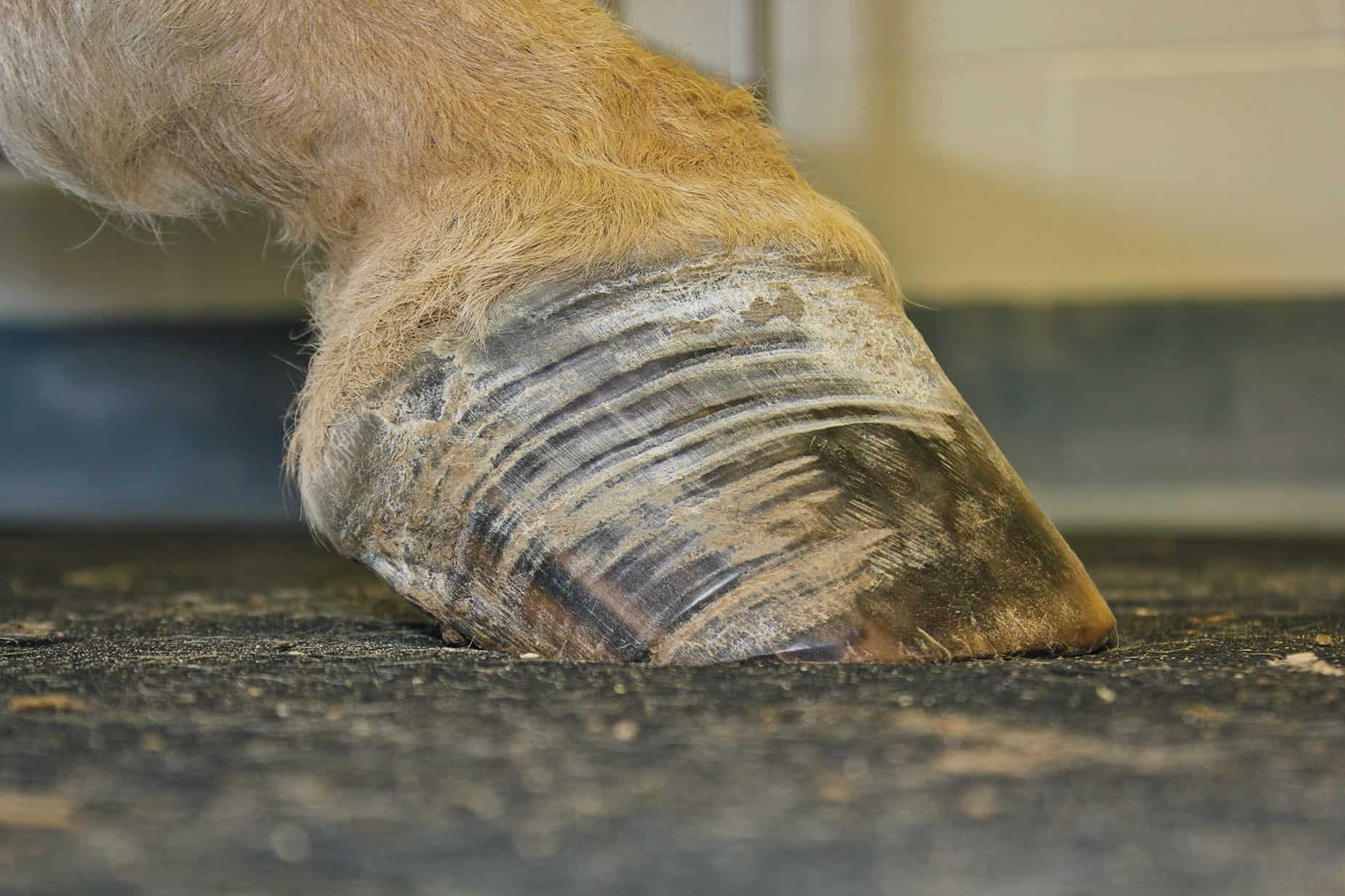Helping Horses With Chronic Laminitis: Farriery Staples

Inciting causes of laminitis include dystocia (difficult birth), placentitis (inflammation of the placenta), colitis (of the colon), grain overload, septicemia (infection in the bloodstream), and contralateral (occurring on opposite sides) limb lameness. And, said one equine podiatrist, the earlier a veterinarian can intervene and begin treatment, the greater chances of success, which in many cases means saving the horse’s life.
“Chronic laminitis is defined in the literature as those cases ranging from 72 hours to several weeks after the onset of pain,” said Sammy Pittman, DVM, of Innovative Equine Podiatry and Veterinary Services, in Collinsville, Texas, at the 2018 American Association of Equine Practitioners Convention, held Dec. 1-5 in San Francisco, California.
Regardless of why a horse develops laminitis, the end result is essentially the same: the lamellae, which anchor the coffin bone to the inner hoof wall, fail. When this occurs, farriers and veterinarians must focus their efforts on the mechanical component of treatment
Create a free account with TheHorse.com to view this content.
TheHorse.com is home to thousands of free articles about horse health care. In order to access some of our exclusive free content, you must be signed into TheHorse.com.
Start your free account today!
Already have an account?
and continue reading.

Written by:
Stacey Oke, DVM, MSc
Related Articles
Stay on top of the most recent Horse Health news with












